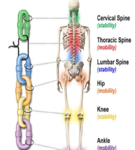Well done with your progress so far 
Your stamina should continue to improve as you keep loosing. A true plyometric session can be intense and should be part of a carefully planned session to avoid over training. A 90 minute class is too long if it includes plyometrics unless you are very fit.
Your stamina should continue to improve as you keep loosing. A true plyometric session can be intense and should be part of a carefully planned session to avoid over training. A 90 minute class is too long if it includes plyometrics unless you are very fit.



